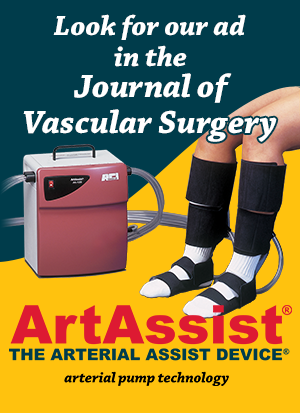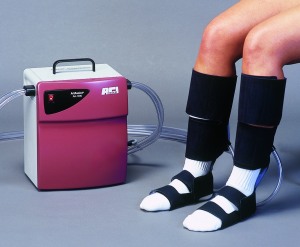Collateral artery growth is possible for patients with critical limb ischemia with the use of external pneumatic compression therapy. Many vascular specialists are skeptical of this notion because it sounds contradictory: how can a completely non-invasive treatment improve microvascular circulation to the point that the limb is saved?
Efficacy lies in the activation of the endothelium by way of exerting shear stress on the vessel.
Vascular specialists have good reason to be wary of most compression pumps claiming to promote better circulation and limb salvage. This is because the developers of such pumps did not design their systems with the endothelium in mind, preferring instead to modify lymphedema pumps or DVT prophylaxes to exert more pressure on the patient’s limb at slow compression and decompression rates (two or more seconds). Little clinical evidence exists to support this technique and little thought was put into this type of system’s design for arterial disease treatment. Furthermore, with such compression pumps, little or no pressure is applied to the foot or watershed areas, limiting cutaneous blood flow in these regions.
Now, for the endothelium. When shear stress is exerted on a vessel, its inner lining naturally secretes vasodilators and anticoagulants such as nitric oxide and TcPO2. In effect, the vessel temporarily widens, allowing more inflow. This effect can only be achieved with rapid external compression and decompression (each less than 0.5 seconds). Over time, the daily application of shear stress will encourage the growth of existing collateral arteries, as seen below:

Arteriogenesis (or collateralization/collateral artery growth) explains why patients have long-term results after stopping ArtAssist® device usage
The ArtAssist® device is the only external pneumatic compression pump designed to focus on collateral artery growth. It activates the endothelium with rapid compression and decompression rates in the foot, ankle, and calf regions. This addresses poor circulation and wounds present from heel to toe, as well as in the rest of the limb.
Acquiring an ArtAssist® device is simple and may be reimbursed by insurance in certain areas of the United States. Device technology experts can discuss medical benefits with both physicians and patients, and will also fulfill orders. Call or email ACI Medical to begin: toll free (888) 453-4356 or info@acimedical.com.

















